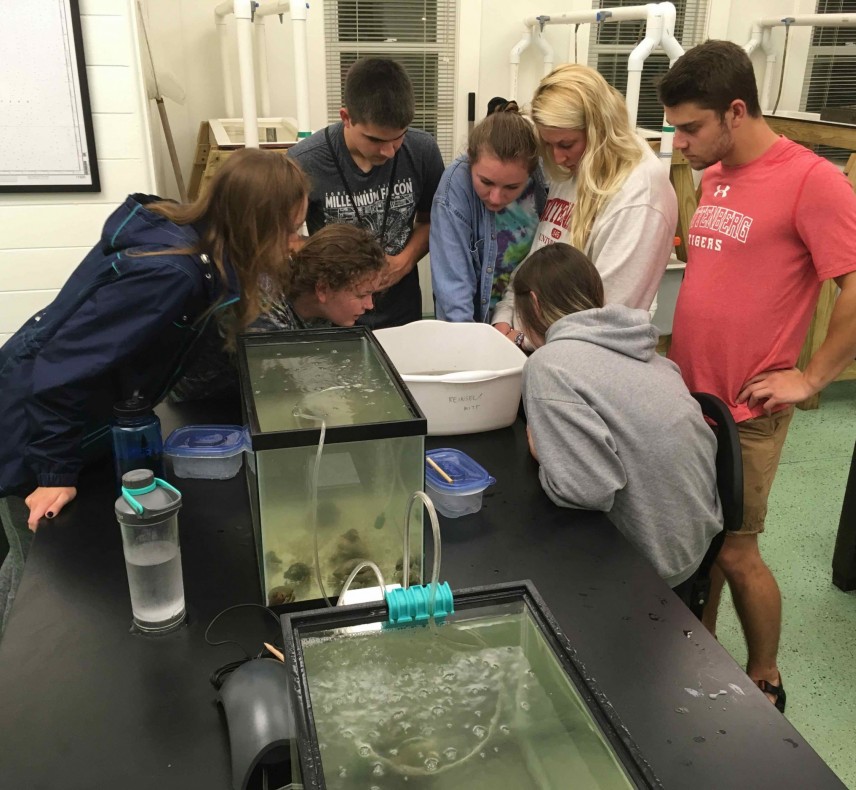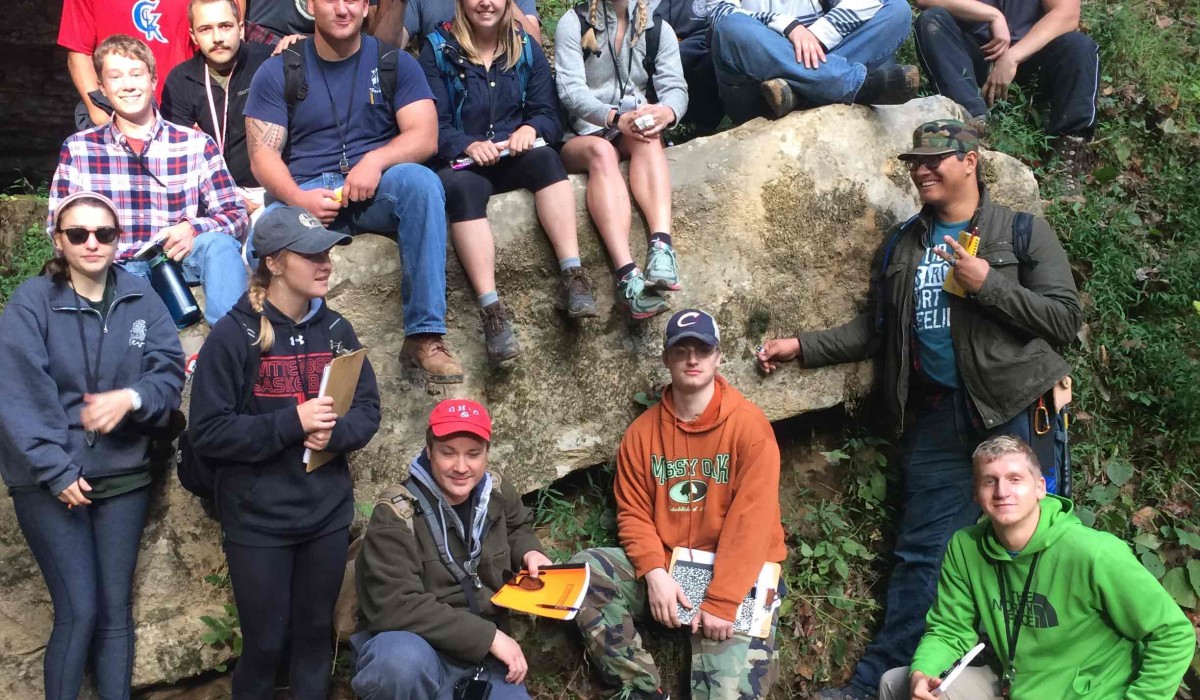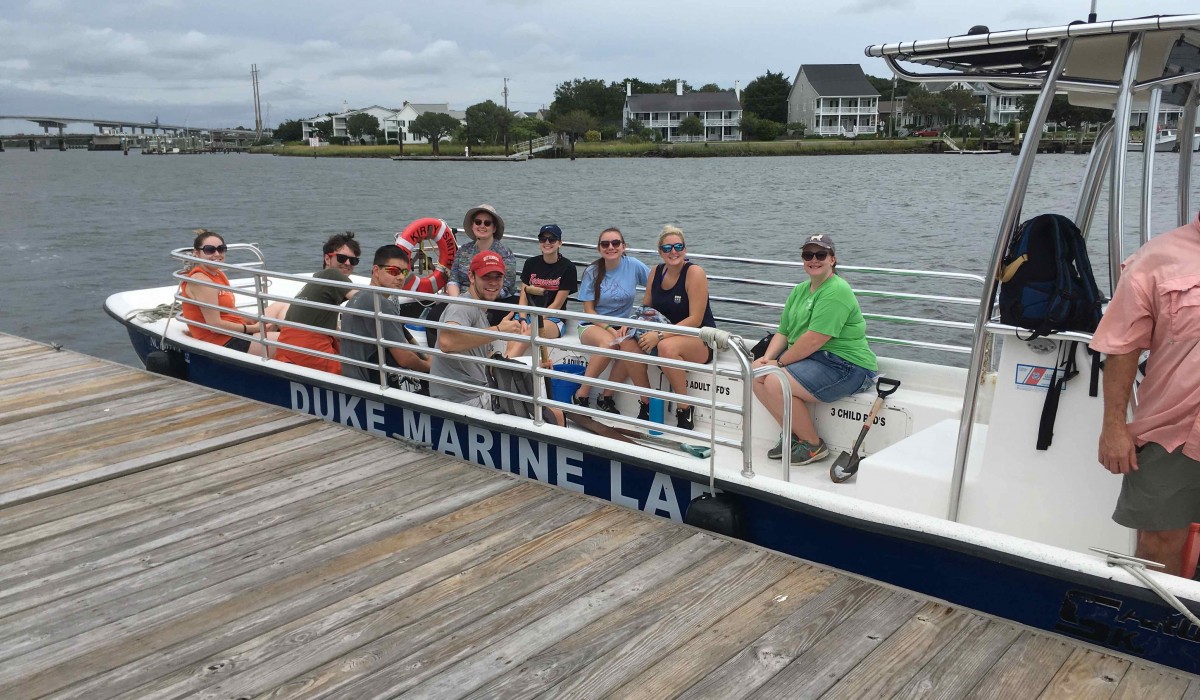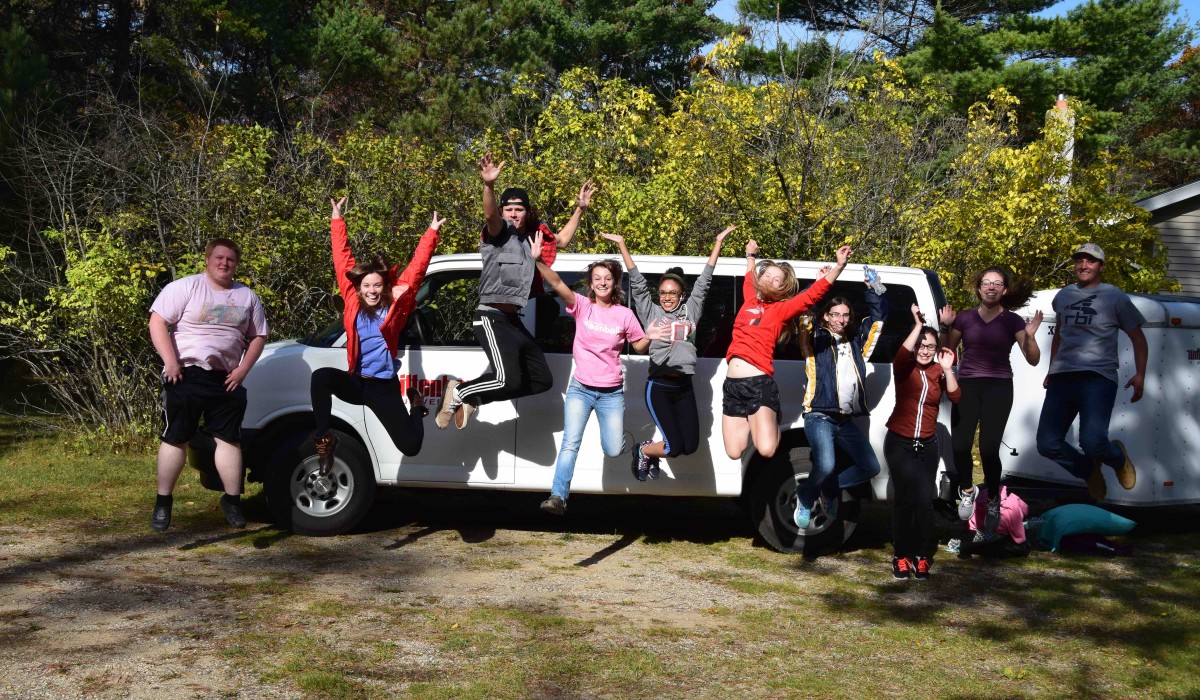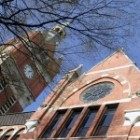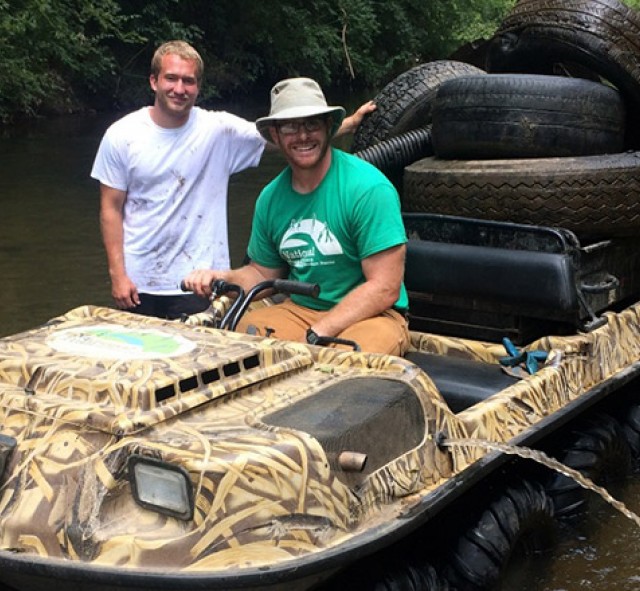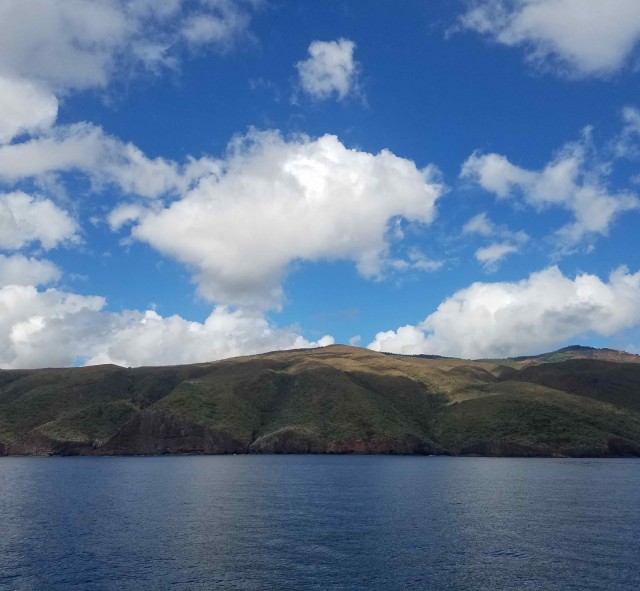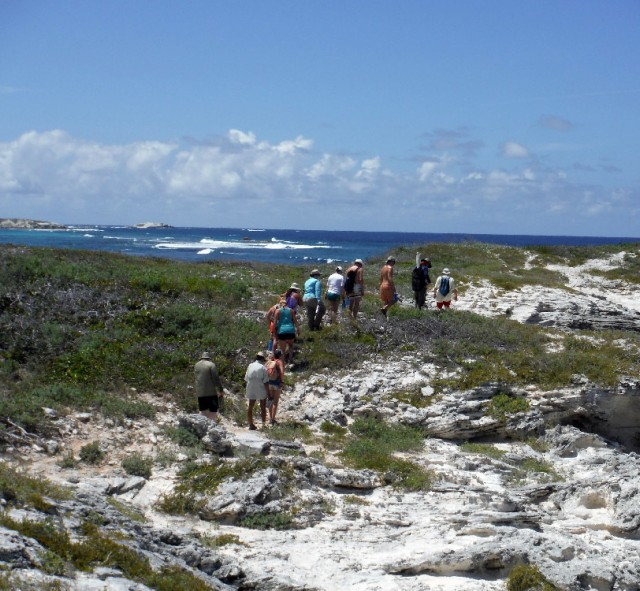Wittenberg provides a uniquely active and engaged learning environment that instills in its students the skills and confidence to make an impact on the world. One way the university accomplishes this is by encouraging students to stretch themselves through field studies and other out-of-the-classroom experiences, all of which are designed to prepare them for lives of meaning and purpose.
Last semester alone, the following took place in several science-focused classes:
The geology department’s field course, GEOL 270 Field Seminar, featured a trip to Mammoth Cave in Kentucky. The course is taught every fall semester by John Ritter, professor of geology, and Michael Zaleha, associate professor of geology and chair of the department.
The course involves spending four-to-five days working on a geological problem of a particular area. The department alternates among three different trips each year, and the only prerequisite for the course is an introductory 100-level class in geology. With this arrangement, freshmen who takes an introductory course in geology have the opportunity to go on a trip each of their subsequent years at Wittenberg.
Trips include traveling to the Seneca Rocks area in the Appalachian Mountains of southeastern West Virginia, the St. Francois Mountains of southeastern Missouri, and the above Mammoth Cave area of Kentucky. All three sites are listed in Albert Dickas’ book 101 American Geo-Sites You’ve Gotta See. This year Zaleha took 18 students on Mammoth Cave trip, where they camped and toured the site.
“The purpose was to investigate the interrelationships between the area’s geologic history, surface and subsurface hydrology, and karst geomorphology,” Zaleha said. “Students studied various rock types (limestones and sandstones) to interpret the depositional environments that existed in the area over 300 million years ago. They used that information to examine how the resultant rock types controlled the more recent development of the landscape and cave formation, all of which affect the surface and subsurface flow of water. Various geologic features that students saw were caves, limestones and sandstones (and the features they exhibit), sinkholes, a collapsed cave, a stream disappearing into a cave in a hillside, and fracture patterns within the rocks."
Moreover, "students observed different levels of cave formation and passage morphology,” Zaleha added. “I think another highlight for the students was taking a ferry across the Green River every day [to the campground]. They also saw many deer and turkeys, which were crowd pleasers.”
A different extended field study associated with an introductory wildlife ecology class recently inspired 11 students to travel to Wittenberg’s Wakeley Lake property in Michigan to examine wildlife management on a larger scale in the Huron National Forest.
During their time, students toured with forest biologist Kimberly Piccolo and examined management for the endangered Kirtland’s warbler, as well as a multitude of other species.
“In addition to experiencing the field of wildlife ecology through different eyes, the trip allowed students to experience the spatial scale on which management for such species occurs,” said Richard Phillips, associate professor of biology. “Upon their return, students shared their experiences and insights with their fellow classmates. The students then broke down into groups to implement a management plan of their own.”
Still other students decided to pursue a marine ecology course this past year, which involved a five-day field experience to Duke University Marine Laboratory in Beaufort, N.C., led by Kathy Reinsel, associate professor of biology and director of Wittenberg's marine science program, and Jim Welch, professor and department chair of biology. The group stayed in the residence halls, ate in the dining hall with the other semester residential students, and worked in one of the lab classrooms on the campus. Another trip was offered during the spring semester in association with the marine invertebrate course.
“These trips are a really important part of our marine science program,” Reinsel said. “They offer our students the opportunity to work firsthand in a marine environment. For our students pursuing the marine science minor, an academic marine field experience is required, and this requirement can be fulfilled with one of these field trips. On both trips, we stay at the Duke Marine Lab and try to spend as much time in the field as possible so that the students see and interact with a variety of habitats, collection methods and organisms. The labs there have running seawater, so we can collect marine invertebrates and hold them during our stay, allowing the students to observe live specimens.”
Students also collected samples and data for all of the labs that are conducted in the class.
“We collected adult fiddler crabs for a feeding sensitivity study, as well as larval fiddler crabs and sediment to see whether larval crabs choose adult habitat based on sediment characteristics,” Reinsel said. “We also collected over 600 small hermit crabs. The students identified the hermit crab species, as well as the type of shell each was inhabiting to determine whether some crabs use particular shells more than others. We also visited a sandflat, looked for other invertebrates in the mud, and collected plankton at night. It’s a field-packed trip. This type of experience is really fantastic for the students who want to pursue careers in marine science. They receive hands-on field work experience as well as exposure to the atmosphere at a world-class research facility. Those students not particularly focused on marine science get the opportunity to learn in a potentially new environment and make connections to concepts and techniques they are learning in their other courses.”
For more on experiential learning options, visit www.wittenberg.edu.


